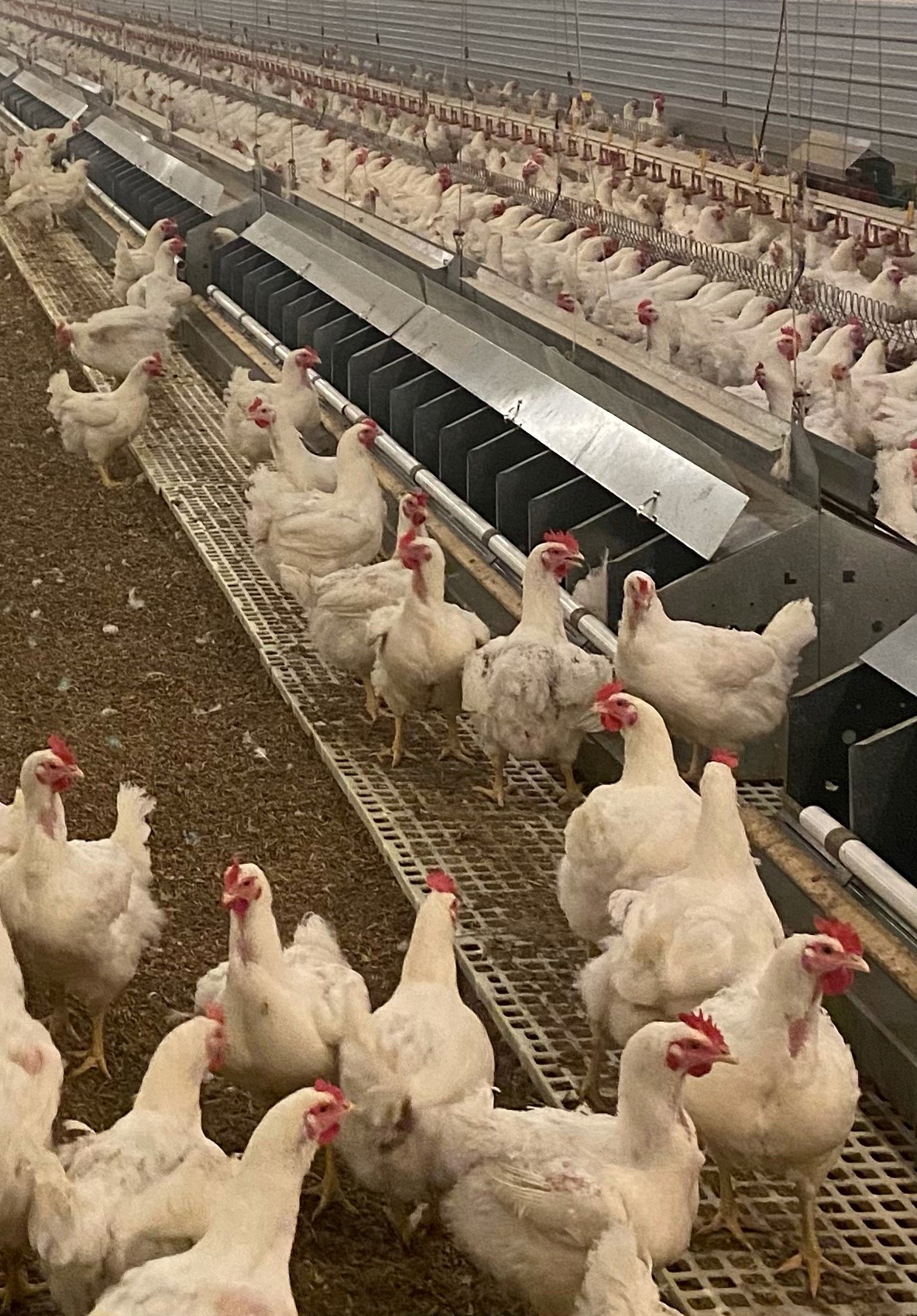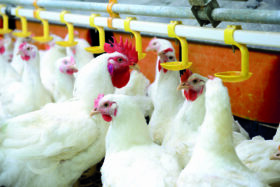By T.J. Gaydos
Broiler breeders are the basis for the egg supply of an integrated company. All the management details of raising broiler breeders are important and require attention. Raising breeders and managing for persistency of lay, peak, fertility, and egg handling are important for all production systems. These details become more important when managing their progeny without the use of antibiotics.

Management in an ABF system requires extra attention – especially egg handling and sanitation. With the inability to use antibiotics in the progeny, it is critical to not bring additional pathogens into the hatchery on or in dirty eggs. A clean, well-managed egg pack will improve performance and animal welfare and significantly reduce seven-day mortality and the risk of foodborne illness.
1. Cleanliness in the broiler breeder house and egg room
Managing egg cleanliness starts in the broiler breeder house before the first egg is laid. The house needs to be cleaned between flocks; at a minimum, water lines and nest pads should be cleaned and sanitized. The egg handling equipment and egg room should also be cleaned and disinfected. Special attention should be paid to egg contact surfaces and places where water accumulates, such as refrigeration and humidification equipment. If the previous flock had any disease issues, the houses should be thoroughly cleaned and disinfected. Between flocks, pest control is critical to reduce disease pressure: flies, rodents, and darkling beetles should be the focus as they are well-documented transmitters of disease. When adding shavings back to the house, it is important to not overfill the house to ensure there is a step between the scratch and the nest and thus help reduce the amount of litter and feces tracked into the nests.

2. Training the birds
Once new breeders are moved to the house, it is important to train the birds on their location and not let hens learn to sleep in the nests. As hens begin to lay, training them not to lay floor eggs is an essential part of a clean egg pack.
Ensuring there are no dark spots, that any floor eggs are picked up quickly, and the scratch is walked on a regular basis are all important parts of the training to lay in nests. The temptation to set floor eggs is high, especially visibly clean eggs; the best way to eliminate this temptation is to reduce the amount of floor eggs. Visibly clean floor or slat eggs typically contain several logs more bacteria than clean nest eggs. Intestinal health is important to decrease the likelihood of soiled eggs.
High quality feed ingredients should always be used in breeder diets and the electrolyte balance carefully monitored to reduce the risk of flushing.

3. Handling the eggs
The egg is well evolved to prevent contamination of the chick. There are multiple layers of protection: cuticle, shell, outer and inner shell membranes, and albumen. The cuticle and shell must be protected to reduce contamination. When removing minimal visible contamination, it is important to damage as little of the cuticle as possible.
3.1 Removing dirt
Dry contamination should be scraped off with a fingernail or soft plastic scraper. Wet contamination should be removed with a clean paper towel or disinfectant wipe. When removing wet contamination every effort should be made to prevent cross contamination of a larger area of the egg. Eggs should not be buffed clean since this may push dust and bacteria into the pores of the egg, limiting gas exchange and increasing contamination risk.
Any significantly soiled egg should be discarded. It is not advised to wash eggs or wet eggs for disinfection.
Gentle handling of eggs is important to reduce the risk of micro-cracks in the shell, further increasing the risk of bacterial contamination and dehydration.
3.2 Egg temperature and humidity
When packing eggs, fill the buggies from the bottom to the top. This decreases the risk of heating already cooled eggs, potentially reducing embryo viability. If egg packing equipment is used, it is important to clean the machine regularly. Special focus should be paid on the suction cups and rollers since they are in direct contact with the eggs and are very hard to clean.
As eggs cool, a slight vacuum is produced that may draw any liquid on the surface into the egg. Every effort should be made to ensure that eggs do not get wet. If they become wet, it is imperative to allow them to dry before putting them in the cooler. Egg trays and racks should be thoroughly cleaned and disinfected at the hatchery before returning them to the farm. Dirty or wet trays should not be used, they should either be thoroughly cleaned and disinfected on the farm or returned to the hatchery for cleaning.
Managing cooler temperatures is vital for hatchability. Additionally, it is important that eggs are continuously getting cooler to reduce the risk of sweating eggs. The hatchery egg cooler should be 15ºC or 59ºF, the farm egg cooler 2ºC warmer or 17ºC, and the egg transport truck in the middle (~16ºC). The humidity during storage should be 70-80% RH. Humidification devices are a high risk for microbial contamination; therefore, ensure that they are cleaned and disinfected frequently, and any mist is not directed towards the egg pack.
Conclusion
Appropriate management of the egg supply is key for any poultry company. The need for increased cleaning and disinfection is amplified in an ABF system. Clean and properly handled eggs are a fundamental step to producing high quality chicks.















